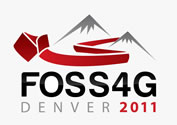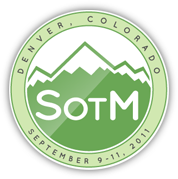VGI and Geotechnology for Supporting Blind and Vision-impaired People Using a Localized Gazetteer
Session Type:
Academic Session
Presenter(s):
Mr Ahmad Aburizaiza, George Mason University
Dr Matthew Rice
Handicapped people, especially the blind and vision-impaired, suffer from transitory hazards in urban environments, including construction barricades, temporary fencing across walkways, redirection signage, and obstacles along curbs. Tactile maps are typically used by blind and vision-impaired people for learning navigation through urban environments, but such maps are not automatically updated with transitory hazards, which might be hazardous. Moreover, these hazards often appear in an unplanned manner and are not included in GIS databases because of their temporal nature. VGI, or Volunteered Geographic Information is a new form of data input for GIS. It adds value by leveraging updates to geographic information by local people, who are well acquainted with the local setting and transitory changes that occur. In our system, different media formats of VGI are accepted; text message, phone calls, e-mails, GeoRSS feeds, and geo-tagging. This data contains updates on transitory hazards occurring on George Mason University’s campus in Fairfax, VA. A gazetteer of place names on campus was developed including buildings, administrative offices, dining facilities, recreational sites, landmarks, and dormitories. The gazetteer contains other slang names and abbreviations used by students, staff, and faculty of George Mason University. In the first phase of this project, a Geo Tool was built using the GIS desktop open source package called MapWindow, which accepts text input and parses place names from the text. Features mentioned in the text are selected and a convex hull is created to limit the geographic area most probable to contain the reported hazard by the text message. With the revolution of Web 2.0 greatly increasing the ability of VGI’s penetration, this system is presently evolving into a web GIS system consisting of different open source web GIS software including PostGIS with PostgreSQL, Geoserver, and GeoExplorer. This paper provides insight into the integration of user-contributed geospatial information into a comprehensive system for use by the blind and vision-impaired.
Speaker Bio:
Ahmad Aburizaiza
PhD student at George Mason University
Geography and Geoinformation Science Department
Fairfax, VA, USA
Schedule info
Time slot:
Fri, 09/16/2011 - 10:30am - 11:00am
Room:
Spruce 










